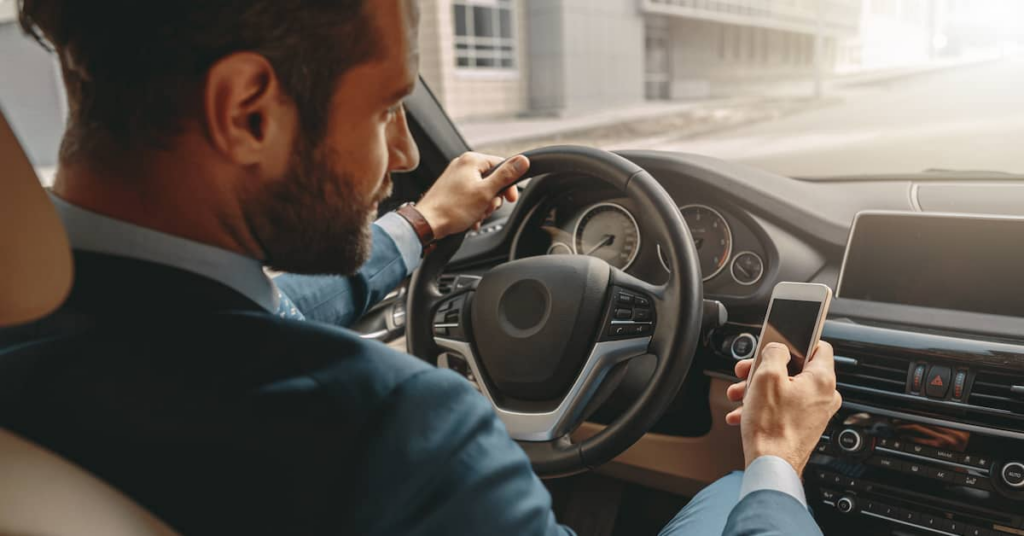Understanding Distracted Driving
Distracted driving includes any activity that diverts your attention away from the primary task of driving. From answering a phone call and reading a text to adjusting the GPS or chatting with passengers, these seemingly innocent behaviors can quickly turn the road into a hazardous environment. Cellphone use is the leading cause of distracting driving in America, and recent years have seen a rise in such risky behavior, bringing the dangers of distraction to the forefront of the national conversation.
The consequences are often devastating, leading to crashes, injuries, and even fatalities. According to road safety research, tasks that take your eyes or mind off the road —even for a moment —significantly increase the risk of a collision.
Prevalence of Distracted Driving
Data from the National Highway Traffic Safety Administration (NHTSA) shows a disturbing trend: in 2023 alone, distracted driving claimed 3,275 lives in the United States. Despite various campaigns and increased social awareness, these incidents show no meaningful signs of decline. Such statistics illuminate a pressing challenge that extends beyond just one age group, state, or driving environment.
Drivers across the nation continue to battle not only the distractions around them but also those coming from within—namely, their own smartphones and behaviours behind the wheel. This pattern of distraction can affect anyone, regardless of how experienced or confident a driver is.
 Cell phone Use: The Primary Culprit
Cell phone Use: The Primary Culprit
Among all possible forms of driver distraction, cell phone use is widely considered the most dangerous. A 2024 Pew Research Center study found that 78% of Americans believe cell phone distraction is a significant issue, often at the same time.
This triple threat has led lawmakers and safety experts to sound the alarm about the dangers posed by smartphones while driving. The fact remains: even a split second of inattention can transform an ordinary drive into a tragic issue in their community, according to Pew Research.
Mobile devices can demand attention visually (reading messages), manually (scrolling or dialling), and cognitively (holding conversations), each of which is a potential precursor to disaster. The consequences are real: in 2022, cell phone use was a factor in 12.1% of distraction-related fatal crashes in the U.S., highlighting the severe risks involved.
Impact on Teen Drivers
Teen drivers are statistically more likely to engage in distracting activities while driving, often underestimating the risk due to inexperience or peer pressure. According to studies, 58% of moderate to severe crashes involving teens are linked to distracted driving, with cell phone use being a significant contributor. These numbers are deeply concerning and call for targeted interventions for young drivers. Education programs in schools, parental involvement, and graduated licensing systems are some of the proactive steps that can help change behaviours and attitudes before dangerous habits take hold.
Legislative Measures and Their Effectiveness
In response to the escalating dangers of distracted driving, many states have implemented laws prohibiting the use of handheld electronic devices while driving. For example, in 2023, Ohio made it a primary offense to use a handheld device while driving. These laws are designed to discourage risky behaviors by increasing the likelihood of traffic stops and fines.
However, the effectiveness of such measures varies. Enforcement practices, public education about the laws, and shifting social norms all influence whether these statutes translate into safer roads. Some states have seen reductions in distracted driving incidents following stricter regulations. In contrast, others report only modest changes, suggesting that legislation must be paired with ongoing educational efforts and public engagement.
Public Perception and Behavior
While the majority of Americans recognize that distracted driving is as hazardous as drunk driving, there remains a significant disconnect between beliefs and behaviors. For instance, a 2025 survey revealed that while 85% of Americans equate the dangers of distraction with those of impaired driving, many admitted to using their phones while driving at least occasionally.
This cognitive dissonance points to a deeper cultural challenge: acknowledging a risk is not enough to change habits. Real progress requires not only public information campaigns but also tools and incentives that help drivers make safer choices every day.
Technological Interventions
Innovations in technology hold promise for reducing distracted driving. Many newer vehicles now come equipped with features like “Do Not Disturb While Driving” modes, voice-activated controls, and advanced warning systems that help drivers keep their focus on the road. Smartphone apps can automatically silence notifications while driving or send automatic replies to incoming texts, minimizing temptation.
Conclusion
Distracted driving, particularly due to cell phone use, is an urgent public safety issue that requires collective action. Strong legislation, robust enforcement, technological innovation, and persistent education efforts are all necessary to combat this preventable threat. By closing the gap between awareness and actual behaviour, fostering a culture of attentive driving, and holding ourselves and others accountable, we can make American roads safer for everyone—now and for future generations.







